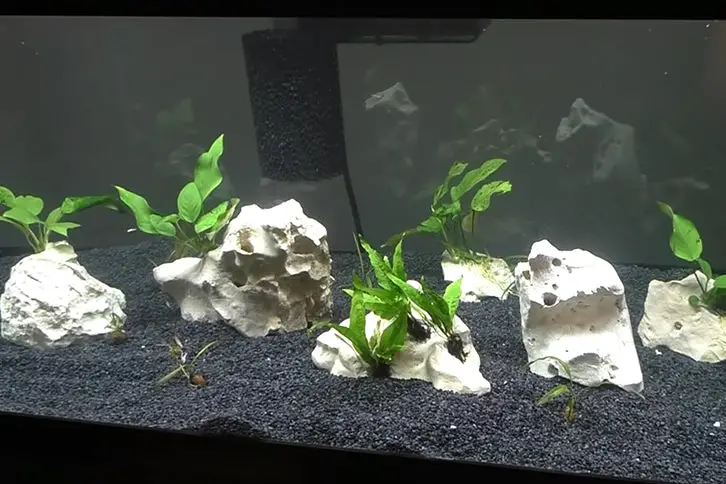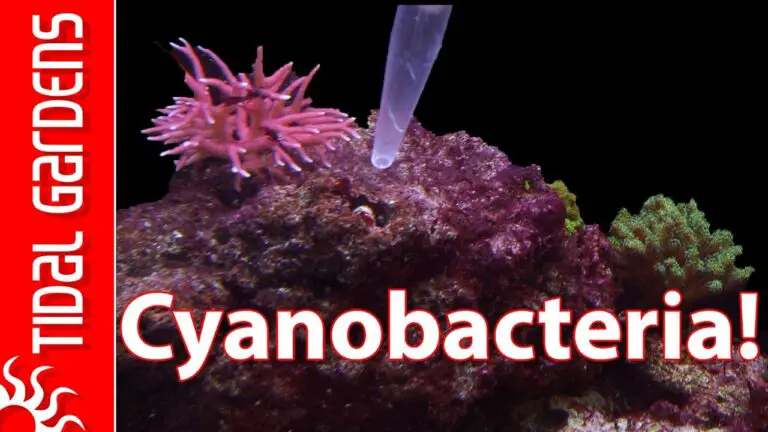Unlocking the Secrets: How Sponge Filters Actually Work?
Sponge filters work by allowing water to flow through a porous sponge material. The sponge is typically made of polyester or foam and comes in various shapes, sizes, and colors.
As the water passes through the sponge filter, it traps any debris such as small particles of food or dirt that may be present in the tank.
Beneficial bacteria will grow on the surface of the sponge which helps to break down waste products from fish into nitrates.
Which can then be removed during regular aquarium maintenance or with a chemical filtration method such as an activated carbon filter.
Sponge filters also add oxygen to your aquarium while helping with circulation.
They are especially useful for tanks containing smaller species of fish that require lower levels of toxins in their environment.
Sponge filters are a great tool for aquarium hobbyists, as they provide both mechanical and biological filtration in one unit.
Mechanical filtration is the process of removing solid waste from the water column, while biological filtration involves using beneficial bacteria to break down harmful ammonia and nitrite into less toxic nitrate.
The sponge filter works by drawing water through an aerated chamber filled with sponges that act as a bio-filter media.
These sponges trap debris and allow beneficial bacteria to colonize on their surface.
As water passes through the sponge filter it is cleaned of both large particulates and dissolved impurities such as ammonia and nitrites, allowing for healthy aquatic life.
Are Sponge Filters Better Than Regular Filters?
Sponge filters are a popular and effective choice for filtering aquarium water, but they can also be beneficial when compared to regular filters.
Sponge filters offer several advantages that make them better than standard filters.
First and foremost, sponge filters provide superior mechanical filtration that removes suspended particles from the water column.
This filtration is especially important in tanks with live plants or fish because it helps keep the water parameters stable and healthy for aquatic life.
Sponge filters also provide biological filtration a process by which beneficial bacteria break down harmful substances.
Like ammonia and nitrites into less toxic forms like nitrates which can then be removed through regular maintenance activities such as partial water changes.
Sponge filters are relatively easy to maintain since they require only occasional cleaning (typically once per month).
Finally, these types of filter systems don’t require electricity or any additional equipment.
So they’re much more affordable than traditional power/canister/hang-on-back models.
Making them an ideal choice for budget-conscious aquarists!
While both types of filter systems have their respective benefits.
Overall, sponge filters tend to fare better when compared to regular ones due to their cost savings and efficient filtration capabilities.
How Effective is a Sponge Filter?
A sponge filter is an effective way to keep a fish tank clean and healthy. It works by drawing water through the sponge.
Which acts as a biological filter for removing toxins and other waste products from the environment.
The pores of the sponge provide plenty of surface area for beneficial bacteria to colonize.
Breaking down harmful chemicals and converting them into harmless substances that can be safely removed from the aquarium.
These filters are relatively inexpensive compared to other filtration systems, making them attractive options for aquarists on a budget.
They are low maintenance, all you need to do is rinse off the sponges every few weeks or so in order to maintain their effectiveness.
With regular maintenance, sponge filters can effectively keep your tank clean and safe for your fish long term at a fraction of the cost!
What are the Disadvantages of a Sponge Filter?
A sponge filter is a type of aquarium filter that uses air bubbles to create water flow and force debris-filled water through the fine pores of the sponge.
Although these filters are relatively inexpensive and easy to maintain, there are several drawbacks associated with them.
One disadvantage of using a sponge filter is its limited capacity for filtration.
The pore size in the sponges can become clogged quickly, reducing their effectiveness at trapping waste particles from the tank’s water column.
Due to their low flow rate, they may not be able to handle larger tanks or more heavily stocked tanks.
Without additional help from other types of filters such as powerheads or canister filters.
Another disadvantage is that they do not effectively remove dissolved toxins like nitrates and phosphates.
Which accumulate over time in most aquariums; this means regular partial water changes must take place in order for those substances to remain at optimal levels.
Finally, find them unsightly since they cannot easily be concealed within an aquascape design and must either float on top or hang off the side of an aquarium where they are clearly visible.
Do Sponge Filters Keep Water Clean?
Sponge filters are an excellent way to maintain clean water in your aquarium. They work by trapping debris and other particles as the water passes through.
Which helps keep the tank clean and prevents ammonia buildup.
Sponge filters also feature a specialized bacteria-rich foam material that encourages beneficial bacteria growth, helping to reduce toxins from entering your tank’s environment.
By creating additional biological filtration they help create a healthier aquatic environment for fish or other creatures living inside it.
With regular maintenance, you can ensure that your sponge filter is working efficiently and keeping your water crystal clear, making them an invaluable part of any aquarium setup!
How to Use Sponge Filter Without Air Pump?
Using a sponge filter without an air pump is possible, but not ideal. Instead of relying on an air pump to create the necessary water flow for filtration.
You can use gravity or other natural means to provide the necessary pressure and suction needed for your fish tank’s filter system.
This includes using higher elevation tanks that allow water to naturally flow from one container into another.
Or incorporating multiple containers connected by tubing where gravity will pull water through your sponge filter.
How to Use a Sponge Filter?
A sponge filter is a great tool to use in an aquarium as they provide biological filtration while also providing oxygenation.
To get started, attach the air pump tubing to the base of the sponge filter and place it in your tank.
The flow of water created by the air pump will pull debris into the pores of the sponge, trapping them so that they can be removed later on with regular maintenance.
This type of filtration does not require any additional chemical or mechanical filtration, making it ideal for fish tanks where a lot of smaller species are kept.
How to Make a Sponge Filter?
Making a sponge filter is a great way to keep your aquarium clean, healthy and oxygenated.
You’ll need an air pump, airline tubing, some sponges of varying sizes (depending on the size of your tank) and two plastic bottles with lids.
Cut off the top third of one bottle and cut out the bottom half of the other so that both pieces fit together like an hourglass shape.
Place the smaller piece inside larger piece and then attach the airline tubing to an air stone at the bottom.
Fit sponges into each end of the filter so they cover all openings, then fill it with water from your aquarium or de-chlorinated tap water.
Finally connect it to your air pump and turn it on – you now have a homemade sponge filter!
Sponge Filter With Air Pump
A sponge filter with air pump is a great option for aquarium filtration, as it provides both mechanical and biological filtration.
The mechanical action of the sponge traps large particulates in the water and helps keep it clean.
While beneficial bacteria will colonize on the surface of the sponge to break down organic waste products like ammonia and nitrites.
These filters are also very easy to maintain since they require no additional media or replacement parts.
This makes them an ideal choice for beginner aquarists who don’t want to spend a lot of money on equipment.
How to Clean Sponge Filter?
Sponge filters are a popular choice for many aquarists, as they provide great filtration and aeration without taking up too much space.
Cleaning your sponge filter is an important step in maintaining the health of your aquarium.
As dirty sponges can harbor bacteria that can be harmful to fish and other aquatic life.
To clean your sponge filter, first remove it from the tank and rinse it thoroughly under warm running water.
Be sure to scrub away any dirt or debris stuck on the surface of the sponge with a soft brush or cloth.
Once you have rinsed off all visible grime, soak the foam in a solution of water mixed with aquarium-safe bleach (typically one part bleach to ten parts water).
This will kill any lingering bacteria and help keep your aquarium healthy!
Sponge Filter Setup
A sponge filter setup is a great option for aquariums, as it provides biological filtration and oxygenation.
The filter consists of a plastic tube that houses an air stone and a foam sponge.
Water is drawn up through the tube, creating bubbles which are then filtered through the sponges to remove debris and harmful toxins from the water.
Beneficial bacteria can colonize on the surfaces of these sponges, further providing vital filtration benefits to your tank’s ecosystem.
Sponge Filter vs Hang on Back
Sponge filters are a popular choice for many aquarium owners due to their simple design and low-cost.
Unlike hang on back (HOB) filters, sponge filters feature large sponges that provide plenty of surface area for beneficial bacteria to colonize.
They don’t require any electricity or complex setup, making them very easy to use and maintain.
Sponge filters offer excellent biological filtration as the water passes through the sponges slowly which increases oxygen exposure.
HOBs can be more powerful than sponge filters when it comes to mechanical filtration.
But they also require regular maintenance such as cleaning the filter media regularly in order to keep them running efficiently.
Sponge Filter With Air Stone
A sponge filter with air stone is a great way to keep your aquarium clean and healthy.
It works by using the power of an air pump to create water movement that helps remove dirt, debris, and waste from the tank.
The sponge acts as a mechanical filtration medium, trapping particles up to 10 microns in size while simultaneously providing beneficial bacteria colonies for biological filtration.
An air stone also increases oxygen levels in the water which creates better conditions for fish health.
Conclusion
Overall, sponge filters are an effective way to maintain clean and healthy aquariums.
They provide biological filtration that helps remove toxic ammonia from the water while also providing oxygenation for your fish.
Sponge filters are easy to use and require minimal maintenance, making them a great choice for hobbyists of all levels.
With their simple design and reliable performance, it’s no wonder why sponge filters have become so popular in the world of aquarium keeping.





